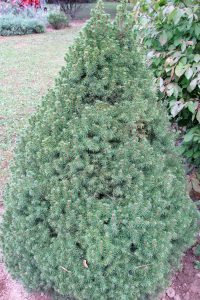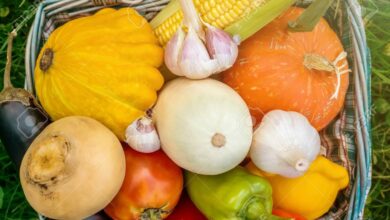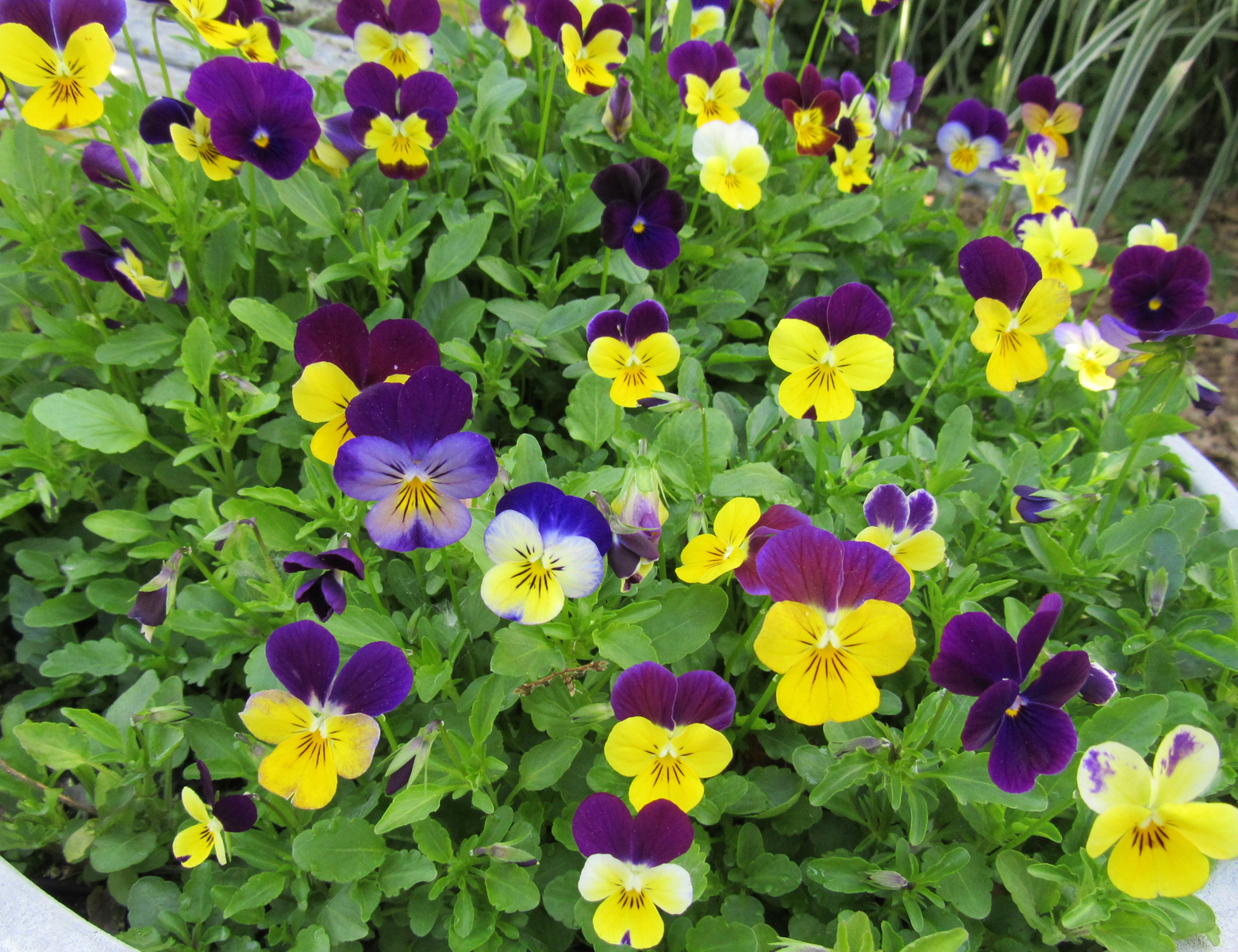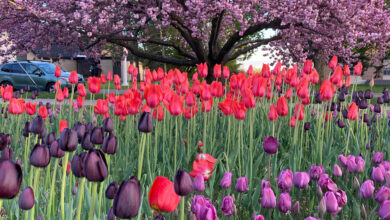Growing Dwarf Alberta Spruce
Evergreens are an important component of the home landscape. They provide color year round and formal shapes to the garden. Dwarf Alberta Spruce, Picea glauca var. Albertiana ‘Conica’ is a dwarf cultivar of the Alberta White spruce and a popular evergreen for home gardeners.
 The tree is easy to find at local garden centers and is prized for its compact pyramidal growth habit and tiny half-inch needles. It is a slow grower – only two to four inches per year – and can be used as a container plant.
The tree is easy to find at local garden centers and is prized for its compact pyramidal growth habit and tiny half-inch needles. It is a slow grower – only two to four inches per year – and can be used as a container plant.
Dwarf Alberta Spruce works well for formal landscape design and is commonly used to line entryways or as a focal point. Its light green color is beautiful in every season, and can be a way to highlight the colorful fall foliage of deciduous plants. Of course, their nearly perfect conical shape makes dwarf Alberta spruce great for decorating with Christmas lights during the holidays.
Dwarf Alberta spruce are easy to maintain as they rarely need pruning. The tree naturally maintains its shape, especially when given the proper spacing for growth, and the short, soft needles result in a very solid and full appearance.
According to University of Illinois Extension, dwarf Alberta spruce can reach 10 feet high and three feet wide, so plan accordingly. The plant might need pruning if new growth begins to revert back to the large Alberta White spruce, which could occur if cells lose their dwarf mutation. Be sure to remove any of these revertant areas cutting below the area where the revertant branch begins.
To plant dwarf Alberta spruce, select a spot in full or partial sun with very well-drained soil – they do not tolerate wet feet. Additionally, pollution, road salt and high heat are not tolerated by dwarf Alberta spruce.
The National Gardening Association recommends measuring the depth and width of the soil in your tree’s container. Dig a hole to that depth and two to three times wider. Loosen the soil around the sides of the hole to help roots penetrate, but do not loosen the soil at the bottom of the hole – the disturbed soil may settle and leave the the tree planted too deeply. Amend poor soil with one-third compost before backfilling. Mulch newly planted trees with two to four inches of shredded bark to conserve soil moisture and prevent weeds. As with all trees, keep mulch away from the trunk.
When watering, gently soak with a slow, steady stream of water or use a soaker hose.
Spider mites can plague dwarf Alberta spruce. Watch out for these pests who suck on plant juices and can leave a tree looking yellow and browned. You can check for mites by holding a white piece of paper under a branch. Shake the branch and if you see tiny red specks which are moving, you have mites.
Spider mite infestation can be controlled non-chemically with a forceful stream of water – however, watch not to over-soak roots. To control chemically, there are many products which include the active ingredients bifenthrin, dicofol, and fentabutatin-oxide. Illinois Extension notes that canola, clove, cottonseed, petroleum or sesame oils can all be used along with insecticidal soap.






